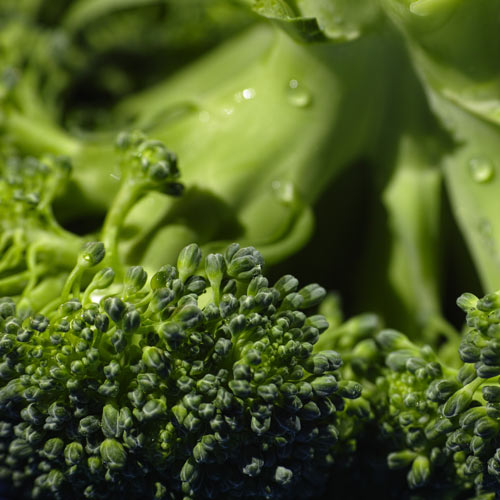You’ve probably been told at one point or another that microwaving is bad for food. In particular, many people think it can destroy important nutrients. Is this true though? And is it something you should be concerned about when buying a microwave?
The simple answer is that cooking most foods in a microwave doesn’t destroy more nutrients than other methods – at least if cooked correctly. The amount of vitamins and nutrients remaining in food depends much more on the cooking time, temperature and amount of liquid used than the method of heating.
In fact, microwaving may retain more nutrients than other cooking methods. This is because microwaves cook faster and with less heat.
Despite this, the rumour that microwaves “nuke” your food and cause all sorts of health problems is unlikely to go away soon.
Where Does the Rumour Come From?
Microwaves have become an essential appliance in almost every home, but many people don’t understand how they work.
A microwave uses a magnetron to generate radiation. This radiation bounces around inside the cavity while heating water molecules within the food. The heat spreads quickly throughout the food, so it effectively cooks from the inside.
Despite this relatively simple heating process, the word “radiation” has caused suspicion that microwaves must damage food. This is understandable, as microwaves work so differently to other cooking methods.
Fortunately, these fears are unfounded. While microwave ovens use radiation to cook, they are proven to be safe if used correctly. They are also just heating food – the only difference is the method.
Why Isn’t it True?
Any type of cooking can reduce the amount of nutrients in food – including microwaving. A study found that using a microwave isn’t worse than other methods though.
Nutrients and vitamins are retained most efficiently when food is cooked quickly, doesn’t use much liquid and is exposed to heat for the shortest time. Water-soluble nutrients such as vitamin C, B and folic acid tend to be the most sensitive to heat, so are most likely to be lost during cooking.
Microwaves cook faster and use less liquid than most other methods. This is why boiling a vegetable such as spinach on the hob can destroy over 70% of certain nutrients such as folic acid, while microwaving retains almost all of it.
Or, to quote the Harvard Medical School Family Health Guide:
The cooking method that best retains nutrients is one that cooks quickly, heats food for the shortest amount of time and uses as little liquid as possible. Microwaving meets those criteria
Microwaves do destroy some nutrients – but only because they are cooking at high temperatures. Water-soluble nutrients, in particular, are usually less damaged compared with other methods as microwaving uses less water.
The exception is steaming. In the study above, researchers found that steaming doesn’t cause a significant loss of vitamin C compared with microwaving. Other studies have shown steaming broccoli minimises the loss of certain healthy nutrients.
The good news is that you can use a small amount of water to lightly steam vegetables in the microwave. This is a great way to cook quickly and conveniently without losing nutrition. Just make sure you don’t use too much water, or water-soluble vitamins will leak out of your food.
Retaining nutrition also relies on cooking food correctly. If you cook vegetables in a bowl of water for too long, for example, then a lot of the nutrition will be lost. This is because of the temperature and water content though – not because of the microwave’s radiation.
What About Reheating?
If a meal has been cooked, it’s already lost nutrients and vitamins during the initial cooking process. While cooking in a microwave may destroy more nutrients, especially if overcooked, it’s usually gentler than other methods.
When you reheat food on a hob, the surfaces are cooked at temperatures above boiling which can destroy nutrients. Reheating food in a microwave usually doesn’t cause temperatures to reach this high.
Are There Any Other Dangers to Microwave Cooking?
A correctly functioning microwave oven should be completely safe to use. Microwave radiation is dangerous to humans, but as we mentioned in our article on how microwaves work, the exterior of microwaves are built to prevent radiation from escaping.
There are some situations when microwaving can be dangerous though. These include:
- If the microwave is damaged. This can allow microwaves to escape during cooking.
- If the door doesn’t shut correctly. Again, this can allow microwaves to escape.
- If you’re cooking with plastic that isn’t “microwave safe.” This can allow chemicals to leak into your food during cooking. Always check that a plastic container can be used in a microwave.
- If you’re cooking liquid at high temperatures. It can be easy to accidentally scold yourself. This is more likely if the microwave is located too high so you need to reach up to open the door.
- If water is superheated. Water in a microwave can be heated to temperatures far above boiling, which usually isn’t possible with conventional cooking methods. In certain circumstances, this may cause water or food to burst into steam, which can cause burns.
Despite these potential dangers, if an undamaged microwave is used correctly there is no danger. You might not get the same texture as baking, nor the pleasant aromas during cooking, but you don’t need to worry about safety or a loss of nutrition.
Summary
The takeaway from this article is that you shouldn’t be concerned about losing vitamins when cooking in a microwave. When used correctly, a microwave oven can be a quick and convenient way to cook meals – and may even reduce the loss of certain nutrients.

